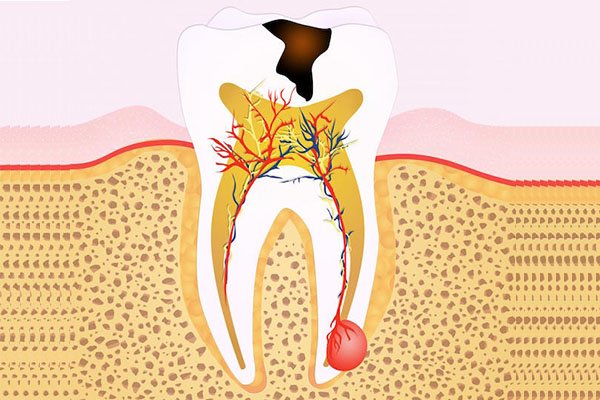
Root canal treatment, or endodontic therapy, is one of the most misunderstood and feared dental procedures. However, it is a vital treatment for preserving oral health and preventing severe dental issues. Understanding its importance can alleviate anxieties and emphasize its role in dental care.
Understanding Root Canal Treatment
Root canal treatment involves the removal of infected or damaged pulp from the interior of a tooth. The pulp contains nerves, blood vessels, and connective tissue, which can become infected due to deep decay, repeated dental procedures on the tooth, large fillings, or cracks. This infection can cause significant pain and lead to abscesses if untreated.
The procedure typically involves several steps:
- Diagnosis: Dentists diagnose the need for a root canal through clinical examination and radiographs.
- Access Opening: An opening is made in the crown of the tooth to access the pulp chamber.
- Cleaning and Shaping: The infected pulp is removed, and the interior of the tooth is cleaned and shaped.
- Filling: The cleaned space is filled with a biocompatible material, usually gutta-percha, and sealed.
- Restoration: A crown or filling is placed on the tooth to restore its function and appearance.
Importance of Root Canal Treatment
1. Pain Relief
One of the most immediate benefits of root canal treatment is pain relief. Infected or inflamed pulp can cause severe toothaches, sensitivity to hot and cold, and pain while chewing. By removing the infected tissue and sealing the tooth, root canal therapy eliminates the source of pain and discomfort.
2. Preventing Spread of Infection
If a tooth infection is left untreated, it can spread to surrounding tissues, leading to abscesses, which are pockets of pus caused by bacterial infection. Abscesses can cause swelling, severe pain, and even systemic issues such as fever and sepsis. Root canal treatment effectively removes the infection, preventing its spread and protecting overall health.
3. Saving the Natural Tooth
Preserving natural teeth is a primary goal of modern dentistry. Losing a tooth can lead to several issues, including difficulty chewing, shifting of adjacent teeth, and jawbone deterioration. Root canal treatment allows for the preservation of the natural tooth structure, maintaining the tooth’s integrity and function.
4. Restoring Dental Function
A tooth that requires a root canal is often compromised in function due to pain or structural damage. Post-treatment, the tooth can be restored with a crown or filling, allowing it to function normally. This restoration enables patients to chew, speak, and smile with confidence, maintaining overall oral health and quality of life.
5. Aesthetic Benefits
Root canal treatment, followed by proper restoration, can preserve the appearance of the affected tooth. This is particularly important for front teeth, where aesthetics play a significant role in self-esteem and social interactions. A well-restored tooth can blend seamlessly with natural teeth, maintaining a person’s smile and facial structure.
The Procedure: Addressing Common Misconceptions
Misconception 1: Root Canals are Painful
Thanks to advances in dental technology and anesthesia, root canal procedures are no more painful than getting a filling. In fact, the treatment is designed to relieve the severe pain caused by the infected tooth.
Misconception 2: Extraction is Better than Root Canal
Some people believe that extracting a problematic tooth is better than undergoing a root canal. However, saving the natural tooth through a root canal has numerous benefits over extraction, such as maintaining natural chewing efficiency, preventing jawbone deterioration, and avoiding the need for costly and complex procedures like dental implants or bridges.
Misconception 3: Root Canals Require Multiple Visits
While some complex cases might require multiple visits, many root canal treatments can be completed in one or two appointments. The number of visits depends on the severity of the infection and the complexity of the tooth’s anatomy.
Advances in Root Canal Treatment
Modern dentistry has seen significant advancements in the techniques and tools used for root canal treatment, making the procedure more efficient and comfortable for patients.
1. Digital Imaging
High-resolution digital radiography allows for better diagnosis and treatment planning. It provides detailed images of the tooth’s interior structure, helping dentists to locate all the canals and assess the extent of the infection accurately.
2. Rotary Instruments
Traditional manual files have been largely replaced by rotary instruments powered by electric motors. These tools are more efficient at cleaning and shaping the canals, reducing the time needed for the procedure and improving the overall outcome.
3. Electronic Apex Locators
These devices accurately determine the length of the root canal, ensuring thorough cleaning and reducing the risk of leaving infected tissue behind.
4. Magnification and Illumination
Dental operating microscopes provide enhanced visibility, allowing dentists to see intricate details inside the tooth. This improves the precision of the treatment, especially in teeth with complex anatomy.
5. Biocompatible Materials
Advancements in filling materials, such as bioceramics, provide better sealing and biocompatibility, promoting healing and reducing the risk of reinfection.
Post-Treatment Care and Maintenance
Successful root canal treatment also relies on proper post-treatment care and maintenance. Patients are advised to:
- Avoid Hard Foods: Immediately after the procedure, avoid biting down on hard foods to prevent damaging the treated tooth.
- Maintain Oral Hygiene: Regular brushing and flossing help prevent further decay and infection.
- Follow-up Visits: Regular dental check-ups ensure that the treated tooth is healing properly and that no complications arise.
- Restorative Care: Getting a crown or permanent filling promptly after root canal treatment helps protect the tooth from fractures and reinfection.
Conclusion
Root canal treatment is a critical procedure in modern dentistry, playing a vital role in preserving oral health, preventing severe dental issues, and maintaining natural teeth. Despite common misconceptions, it is a relatively painless and efficient treatment that offers numerous benefits. Advances in dental technology have further improved the procedure, making it more comfortable and successful.











